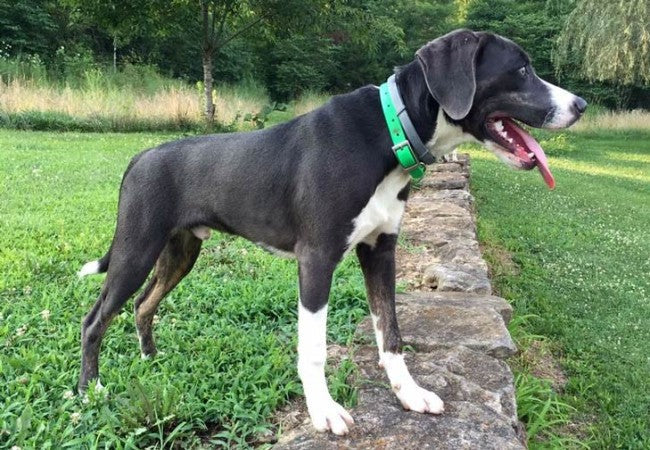Mountain Cur 2025: Rugged American Hunter Temperament & Care 🐶✨

In this article
Mountain Cur 2025: Rugged American Hunter Temperament & Care 🐶✨
By Dr. Duncan Houston BVSc
Introduction 🌟
The Mountain Cur is a hardy, courageous, and highly intelligent American working dog, prized for treeing, hunting, guarding, and farm work. Originating from Appalachian settlers, this 2025 guide teaches you everything—from its rich heritage and physical attributes to care routines, training, and ideal home life.
1. Origins & History 📜
- Brought to the U.S. by European settlers in 17th–18th centuries across Kentucky, Tennessee, Virginia & Ohio.
- Developed as a versatile working dog—hunting small game like squirrels & raccoons, big game like boar and bear—plus guarding and herding tasks.
- Breed nearly disappeared post-WWII; revived in 1957 by American breeders and recognized in 1998 by UKC and AKC Foundation Stock Service.
2. Size & Appearance 🧩
- Height: males 18–26″, females 16–24″; Weight: typically 30–60 lb.
- Muscular, athletic build; broad head with strong muzzle; medium-drop ears, penetrating eyes; tail medium length.
- Short dense double coat—smooth or rough—colors include black, blue, yellow, brown, brindle, red, often with white markings.
3. Temperament & Personality ❤️
- Highly intelligent, fearless, loyal, eager to please—but with strong independence.
- Energetic working dog—needs daily purpose; otherwise boredom leads to destructive behavior.
- Protective and reserved with strangers, but loving toward family and good with well-socialized children.
- Very high prey drive—may chase small animals; early socialization essential for multi-pet households.
4. Exercise & Mental Enrichment 🏃♂️
- Needs at least 60–90 minutes of robust exercise daily—ideal for hiking, hunting, running, treeing, dog sports.
- Requires mental stimulation: tracking, scent games, obedience challenges to prevent anxiety and destructiveness.
- Thrives with a job or task; unsuitable for sedentary or apartment lifestyles.
5. Grooming & Care ✂️
- Short double coat: brush weekly to manage moderate shedding; more during seasonal blows.
- Occasional baths to avoid moisture-related skin issues; clean ears, trim nails monthly, brush teeth regularly.
6. Health & Lifespan 🩺
- Life expectancy: typically 10–13 years; some reach 16 and beyond.
- Generally healthy, but potential issues include hip/elbow dysplasia, eye conditions, parasites, and skin sensitivity.
- No major breed-specific diseases are widely reported; regular vet checkups remain essential.
7. Training & Socialization 🎓
- Highly trainable but independent—excels with firm, consistent, positive reinforcement methods.
- Early, varied socialization critical to reduce territorialism and excessive protection.
- Best suited for experienced owners capable of establishing leadership and structure.
8. Family Fit & Environment 🏡
- Ideal for active households—outdoor enthusiasts, hunting, farming—requiring ample space.
- Can live with older kids and other dogs if well socialized; high prey drive makes small-pet households challenging.
- Not suitable for first-time owners or those with sedentary lifestyles or small apartments.
9. Pros & Cons ⚖️
- Pros: Intelligent, loyal, courageous, versatile working ability, minimal grooming.
- Cons: High energy, strong prey drive, need for leadership, not suited to small spaces.
10. Adoption & Breeder Advice 🌟
- Choose reputable breeders testing for hip/elbow dysplasia and offering working temperament lines.
- Explore rescues and breed clubs (e.g., Original Mountain Cur Breeders Association).
- Puppy cost ranges from $500 to $1,000 depending on lineage and region.
11. FAQs ❓
- Do they shed? Moderate shedding; weekly brushing and occasional baths keep coat healthy.
- Are they good with kids? Yes with older, respectful children if socialized early; high energy requires supervision.
- Do they bark a lot? Can voice alertness training moderate excessive barking?
- Are they apartment-friendly? No—not recommended; they require space and mental stimulation.
- How long do they live? Generally 10–13 years; up to 16 years in healthy lines.
12. Integrating Ask A Vet,🐶
- Ask A Vet: Consult on hip/elbow health, parasite prevention, skin sensitivity, and working dog wellness.
13. Final Thoughts ✅
The Mountain Cur is a powerful, bright, and fiercely loyal companion best suited for active, experienced owners who embrace outdoor life and structured training. With the right environment and leadership, they thrive as devoted partners. To support your Cur’s journey, visit AskAVet.com and download the Ask A Vet app for personalized guidance and professional expertise.






